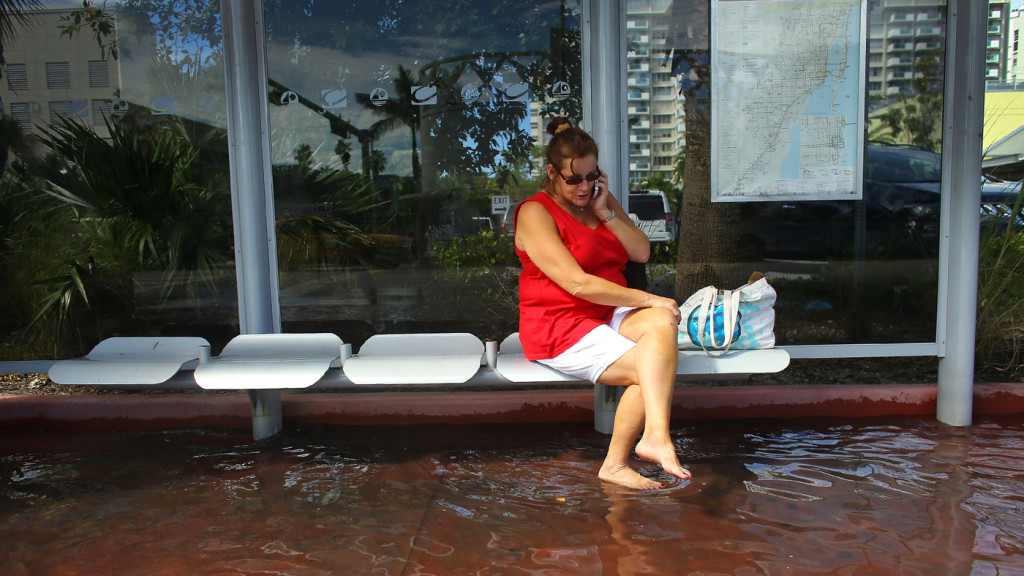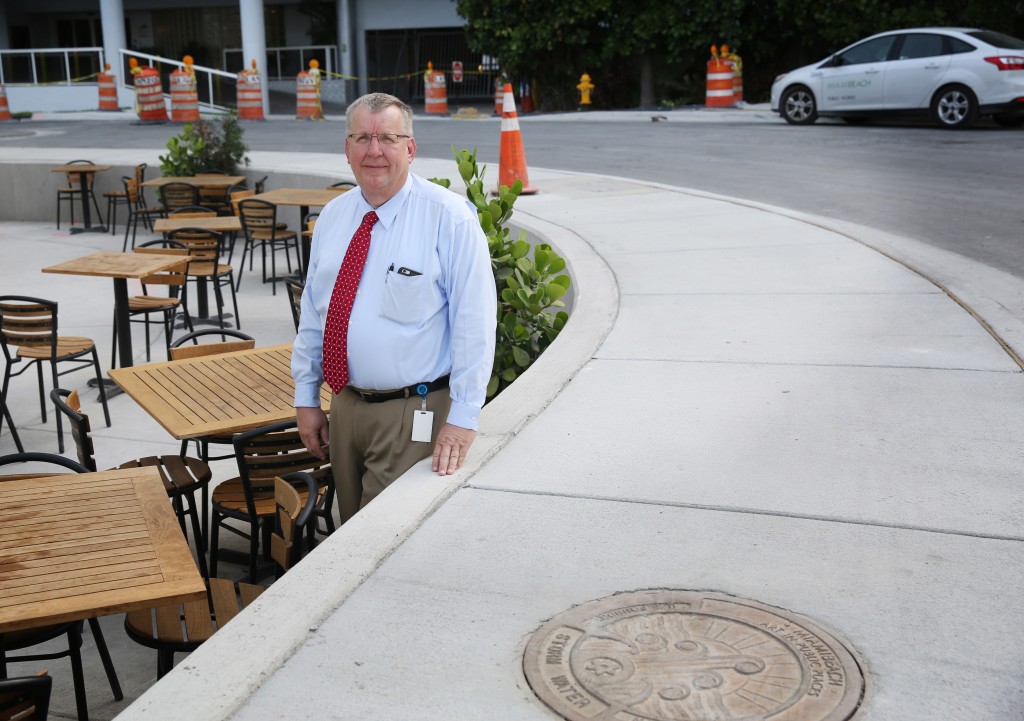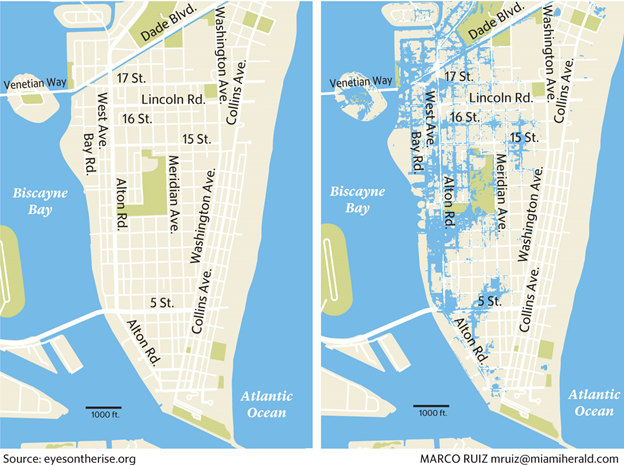Miami Beach. Avoiding Another Lost Atlantis?


Miami Beach and many parts of southeast Florida face increased flooding associated with sea-level rise, occurring and projected. Costs may be astronomical in combating the prospect there and in many other low-lying regions around the U.S. Indeed, the world.
“All told, Greenland’s ice holds enough water to raise global sea levels by twenty feet,” says acclaimed science writer for The New Yorker, Elizabeth Kolbert.
In a recent piece for the magazine about Miami, she writes that last August, NASA announced a new monitoring program to supplement satellites recording ice melt in Greenland. The abbreviated form of the program’s name is OMG. (Yup.) Stands for Oceans Melting Greenland.
Rather than imaging ice melt from the skies above Greenland, OMG will provide monitoring from below. At the NASA website: “[The program] will observe changing water temperatures on the continental shelf surrounding Greenland, and how marine glaciers react to the presence of warm, salty Atlantic Water.”
Sea levels could rise by more than 3′ to as much as 6.5′ by the end of the 21st century, according to organizations ranging from the Intergovernmental Panel on Climate Change to NOAA. The average elevation in Miami-Dade County is just 6′ above sea level.
“Water seemed to be bubbling out of the turf,” Kolbert observed about the courtyard fronting a 4-story apartment building off MacArthur Causeway in Miami Beach. Down the road, ponding water was pouring into an underground garage.
As reported in the Miami Herald last October, the City of Miami Beach is planning to spend $4-500M to raise roads and seawalls across the city and to install 80 pumps. The pumps already operational are sending flood water back into Biscayne Bay.

As the piece reports, a Publix grocery store was built several years ago to the considered base flood elevation at the time. There were 7 steps from the street up to the store entry plaza. Today, the grade surrounding the entry plaza has been built up by the city such that there are only 2 steps now to the entry plaza. Sounds very accommodating on the “surface of it.” But, it’s a good example of how sea-level rise appears to be accelerating beyond standards set only several years ago.
The pumps are another issue. 80 pumps are now thought not to be enough to handle flooding attributable to sea-level rise. “We had to raise people’s storm-water fees to be able to pay for the first hundred-million-dollar tranche,” says Miami Beach Mayor Philip Levine.
 Hal Wanless, chair of the University of Miami’s Department of Geological Science, is quoted by Kolbert as saying the pumps are so much effort down the drain. “If we don’t plan for this,” while driving past the famous Fountainebleau Hotel, “these are the new Okies.”
Hal Wanless, chair of the University of Miami’s Department of Geological Science, is quoted by Kolbert as saying the pumps are so much effort down the drain. “If we don’t plan for this,” while driving past the famous Fountainebleau Hotel, “these are the new Okies.”
Betsey Wheaton of the city’s environmental division says: “We don’t have a playbook for this.” (Miami Herald piece.)
One real effect conjectured by Wanless will be the increasing difficulty of obtaining insurance for those hugely expensive condominiums, for example, along the Biscayne Bay side of Miami Beach. (Visualizing the effects of varying levels of projected sea rise–a 2′ mark shown in this illustration–is a project of Florida International University researchers/students.)
Water expands as it heats up. So, global warming has a 2-tiered effect: ice melt and expanding amounts of water leading to sea-level rise.
This effect for Miami Beach could have stormwater drains working in reverse, bringing flood surge from the Bay into the streets. Some kind of backflow preventers would need to be engineered into place, if possible, but overtopping can’t be stopped.

Kolbert reports that of major cities around the world, Miami ranks #2 for assets vulnerable to sea rise. One estimate: $400B. Levine says: “We have a team that’s going to get it done… We can’t let investor confidence in our economy start to fall away.”
How is Florida governor Rick Scott directing his administration on this issue? Reporting work of the Florida Center for Investigative Reporting, Kolbert says state employees were to use the term “nuisance flooding” rather than any words suggesting sea-level rise and global warming. Early in his administration, Scott met with the Koch Brothers at a retreat.
Resilience, which I’ve blogged about, must be initiated for our most-at-risk cities and regional areas. For starters in south Florida, there’s a social vulnerability index map put out by the Miami-Dade County government. Small businesses must be in the planning as well.
With more time, read here for the chilling effects of Hurricane Milo of 2030.